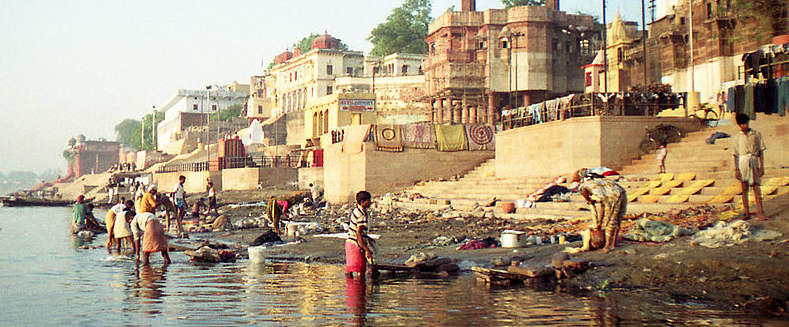- The Ministry of Environment, Forests and Climate Change announced a new strategy for river conservation that will look at the river basin as a whole, rather than merely tackling pollution.
- River basin rejuvenation and management plans will be made for nine selected riverine stretches in the country.
- The Central Pollution Control Board has identified 302 stretches along 275 rivers in the country that are polluted.
The Union Ministry of Environment, Forest and Climate Change last week announced a new strategy for conservation and rejuvenation of major river systems across the country. To restore the lost ecology of the polluted rivers, the new strategy would work towards a holistic river basin approach. The present strategy on the other hand is limited to simply tackling the pollution of the river water through domestic and industrial effluents.
The decision was taken at a meeting chaired by Union Minister for Environment, Forest and Climate Change, Harsh Vardhan. He informed that a tentative action plan has been drawn up. “To begin with, we need to try it out on a few stretches in the country covering sub-basin or catchment area of river,” quoted a Ministry statement. The ultimate mission according to the minister is to make all the rivers clean and ensure the presence of adequate water for steady flow.
He pointed out that independent institutions such as the Indian Institute of Technology (IITs) would be entrusted with the study for preparation and finalisation of river basin management and rejuvenation plan for nine selected stretches.

Sewage is the biggest pollutant
Since sewage is the most significant pollutant for these select river stretches, projects to treat it will be taken up immediately. The minister emphasized that under the conservation plans, sewage treatment will be made mandatory along the identified stretches. Since enforcement of provisions of the Water Act and Environment (Protection) Act is under the purview of local civic bodies in respective states, the Environment Ministry plans to set up sewage management systems with private participation.
Other proposed activities under the plan include watershed management, construction of small check-dams along the catchment area, scientific assessment of quantum of environmental flow in each stretch, rejuvenation of lakes and wetlands along the river basin and protection of floodplains from encroachment.
Meanwhile, the Central Pollution Control Board has identified 302 stretches along 275 rivers in the country that are polluted, based on the biochemical oxygen demand (BOD) – a critical parameter of water quality. It is the amount of dissolved oxygen in water, used in meeting the metabolic needs of aerobic microorganisms in water having organic pollutants and sewage. This is primarily due to the discharge of untreated municipal wastes and industrial effluents into the rivers. Maharashtra has the highest number of polluted river stretches at 49, followed by Assam with 28. In Delhi, there is one river, and that is polluted – the Yamuna.
Focus on River Ganga

However, apart from considering the polluted river systems countrywide, the minister particularly stressed on working out an implementation plan for the Ganga river basin at the earliest and also rope in the resources from the Compensatory Afforestation Fund Management and Planning Authority (CAMPA) fund for the purpose. The CAMPA fund is the repository where money is collected in lieu of forestland diverted for non-forestry purpose. This money is meant for mitigating the environmental impacts caused due to such diversions.
A project report prepared by the Forest Research Institute (FRI) for the catchment area treatment of the Ganga covers the five states of Uttarakhand, Uttar Pradesh, Bihar, Jharkhand and West Bengal, at an estimated cost of Rs. 25 billion.
It proposes to augment Ganga’s water flow through forestry in the catchment areas of the river by planting native plant species in the catchment area, treating the water through biological filters, involve local communities as stakeholders among others. A meeting of the five states would follow soon to decide on the implementation of the report.
The new strategies on river rejuvenation however raised doubts too. “There is nothing new here,” said Himanshu Thakkar, coordinator of South Asia Network on Dams, Rivers & People (SANDRP). “While mentioning rejuvenation of rivers environment, however, does not figure.”

Thakkar finds it amusing that the strategy talks about catchment approach, but mentions only five states, when the catchment of River Ganga includes 11 states, besides neighbouring countries such as Nepal, China and Bangladesh.
“Talking of sewage treatment, the word governance does not figure,” he said, emphasizing a decentralized and natural process-based sewage treatment rather than what is being done now — just one big centralized sewage treatment plant.
Thakkar further said that if rivers are to be rejuvenated through the catchment approach, use of the water for agriculture, cities, industries and villages would need to be regulated. This also includes the use of groundwater, he said. The approach according to him would be to include all users and uses in the process and ensure how water flow in the rivers can be maintained round the year.
He further said that the government would need to assess how its various projects and policies affect the rivers. “For example, the dredging, riverfront development, river linking and waterways is likely to have adverse impacts on the Ganga,” he said.